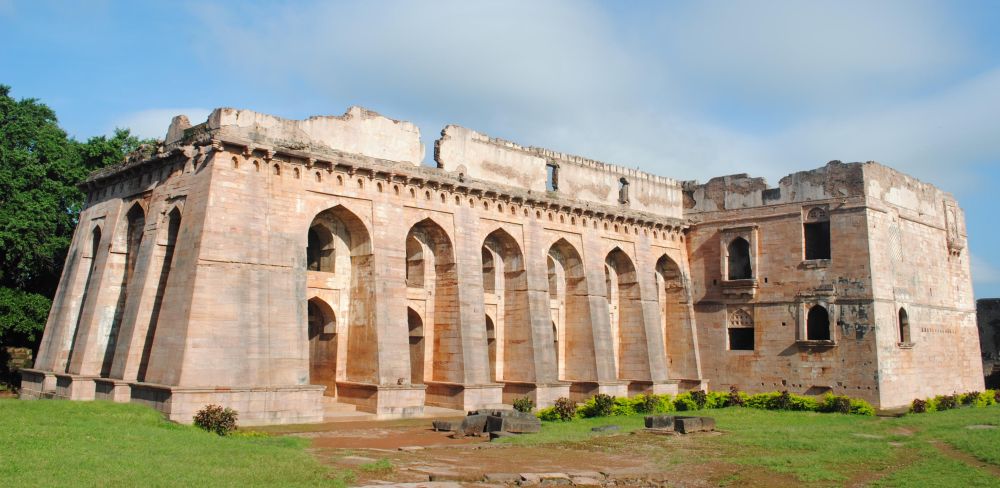

The historic town of Mandu is a testament to the love and architectural ingenuity of its rulers. Nestled in the central Indian state of Madhya Pradesh, Mandu, also known as Mandavgad, is a fortress town celebrated for its fine architecture. Among the many magnificent structures, Hindola Mahal stands out for its unique design and historical significance.
The name Hindola Mahal, which translates to Swing Palace, is derived from its sloping sidewalls that give an impression of a swing. This structure dates back to the reign of the Ghiyas-ud-din-Khilji of the Malwa Sultanate in the 15th century. Designed as an audience hall, it is believed that it may have also been used for royal gatherings and entertainment purposes.
The distinctive feature of Hindola Mahal is the T-shaped layout with massively inclined buttresses on the exteriors that create the swinging appearance. The unique architecture reflects a blend of Afghan and Mughal styles. The use of locally available red sandstone, large halls, and beautifully carved arches demonstrate the advanced engineering skills and the aesthetic sensibilities of the times.
Mandu has always been a hidden gem in India's crown, with the appeal of its historical ruins growing over time. Tourists began to discover the splendor of Hindola Mahal as the government and local bodies started promoting Mandu as a site of cultural heritage. Tourism in Mandu, which includes Hindola Mahal, saw a gradual increase as it gained prominence through archaeological surveys, historical recognition, and guidebooks.
In recent years, heritage tourism has taken center stage in Mandu, with Hindola Mahal being one of the pivotal attractions. Efforts to preserve and maintain the historic monument have attracted both domestic and international tourists. The regional government has organized festivals such as the Mandu Festival to showcase the area's opulent history, art, culture, and cuisine, bringing a contemporary flair to the historic setting. Moreover, the Indian tourism industry has incorporated this site into various travel itineraries focusing on medieval architecture and romantic folklore.
Today's visitors to Hindola Mahal can explore the remnants of the past, surrounded by lush landscapes and the grandeur of Mandu's architecture. The monsoon season is particularly enchanting as the greenery blankets the ruins and creates a picturesque setting perfect for photography enthusiasts and history buffs. Accessibility improvements, including guided tours and informative signage, have made the site more tourist-friendly.
Hindola Mahal continues to be a testament to India's rich cultural tapestry and Mandu's captivating storyline. The efforts to maintain and promote this historical structure have brought well-deserved recognition to the area and contribute to the growing trend of exploring heritage sites in India. As a piece of living history, Hindola Mahal offers an unforgettable journey into the architectural splendor of India's storied past.